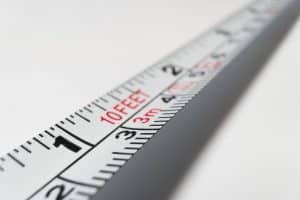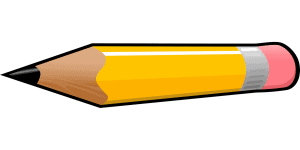The Differences in Tennis Racket Choices
Which tennis racket should you choose? When starting out, it can be hard to decide which tennis racket to choose. There are so many choices with things to consider like weight, length, head size, balance, grip size, and more. The tennis racket you choose today might not necessarily be the one you will be playing with 3 years from now, depending on the advancement of your skill level and game.

The Right Size
Your age and skill level are the first two factors to consider. If you are an 8 year old beginner, you will want a smaller racket with low cost. If you are an advanced 23 year old, an adult racket that gives you greater mastery of your power and control with possibly a higher cost will be your consideration.
Rackets for children are smaller, ranging from as short as 17 inches to as long as 25 inches. The pee wee tennis players, around age 5, should start with a racket 17-19 inches, 19 being the most common choice. 21 inches is standard for a player around 7 or 8 years old, and add a couple of inches to the length every 2-3 years depending on advancement of both size and skill of the player. Most teenagers play with adult rackets, usually 26 inches and up. 29 inches is the longest allowed by tournament play.
Grip Size
The grip size must feel right for the player, as one too thick and one too thin will both make an uncomfortable and non-joyous experience. A junior racket usually comes manufactured with a 4 inch grip. As the child gets older, you may be ready to thicken the grip before it is time to buy a new racket. An overgrip simply wrapped on top of the existing grip will add thickness to the grip, usually around 1/16th of an inch.
As the move into larger and adult racket happens, you will want to look at grips that range all the way from 4 1/8″ to 4 3/4 inches. Each racket usually has a number printed on the butt of the racket (bottom of the handle, and yes I said butt) that corresponds to the grip size. A number 0 is 4″, 1 is 4 1/8th, 2 is 4 1/4″, 3 is 4 3/8″, 4 is 4 1/2″, 5 is 4 5/8″, and 6 is 4 3/4″.
If you are uncertain of your grip size, simply pick up a racket and see how far apart your thumb and forefinger are. They should be 1/4″ apart, roughly. Most important, the grip should FEEL good and comfortable, so you aren’t straining yourself to hang on to the racket and it’s not slipping and losing position.
Weigh the Situation
The weight of the tennis racket will be a huge factor in deciding which racket to purchase. Rackets can weigh as little as 9 ounces and all the way past 11 ounces, which is much lighter than the days of the past. Different weights provide different benefits to your tennis game.
A heavy racket will give your shots more power, but you will lose control. Some players will offset this in string tension, while others may choose to enhance it in string tension. Rackets that weight more than 11 ounces are considered heavier rackets.
A lighter racket will give you more ball control and allow you to bring your racket head around faster. Be aware, the lighter rackets can be a burden against a heavy balled player, allowing hard shots to adjust the racket position on contact and causing the ball to drop into the net before the player knows what hit him. Rackets weighing 9-9.5 ounces are considered lighter rackets.
A Goldy Locks racket will weigh between 9.5 and 11 ounces, and really gives you the best of both worlds. You may never see the great power shots a heavy racket will give you or the precise control a lighter racket has, but your chances of launching your shot 15 feet past the base line and dropping shot after shot in the net decrease when using a middle of the road, jack of all trades racket.
The Head Size
What head size should you choose? The one that helps you hit the ball the best! The bigger head sizes offer a bigger sweet spot to hit, making it easier to control the ball. Generally the lower the skill level the more you want to lean to larger racket heads, typically called oversized rackets. About 110 inches is a good size for a novice, and around 100 for more advanced, but these numbers can vary widely depending on comfort and feel. If you don’t want to go to a smaller size as your skill improves, than stick with what works! The size of the head of the racket is generally measured using square inches. The range of rackets are available between 85 and 135 square inches.

Rackets are Made out of Pencils?
Not exactly. Graphite is an extremely common material for a tennis racket. It is a lightweight and durable material that has been instrumental in replacing wooden rackets as the industry standard. As advancements in material manufacturing have come to fruition, other materials such as titanium, copper, tungsten, fiberglass, aluminum, Kevlar, and boron.
The materials and shape of the racket determine the weight and flexibility of the racket. The flexibility will effect the power vs control aspect of your shots. Generally, the more flexible rackets will offer greater power while the stiffer rackets can offer more control. Choose your tennis racket wisely by knowing the material and the benefits it provides.
String Theory
Most rackets that have a lower price point will already come with tennis strings. As price and quality of the racket go up, the strings tend to disappear! These rackets are usually for more advanced players who what to customize the stringing of their rackets. Players have many different string types and tensions to choose from. The variety allows assistance in power, control, spin, and racket durability.

Time to Choose!
Okay, now with all of that information, the choice of tennis rackets should be simple, right? Wrong! But don’t let that slow you down. Ultimately, a player will determine their own skill level, not a racket. The racket is only a tool to help the player maximize their strengths, minimize his weaknesses, and reach their goals. So whatever you choose, get out there and hit some balls with it!
